So, you’ve been nice to yourself this Christmas and bought a shiny new VR headset.
You’ve heard the positives and negatives – more immersion vs motion sickness – and now you’re looking for some awesome sim racing experiences to blow you away.
Well, we’re here to help, and the following is a list of what we think are the top six racing game VR experiences around.
For the purposes of this test, we used the Oculus Quest 2 headset, soon to retail as the Meta Quest 2, which has proven to be one of the most accessible headsets on the market due to its gaming performance and relative affordability.
In the UK this costs £299.99 for the 128GB version, and £399.99 for the 256GB option.
Project CARS 2
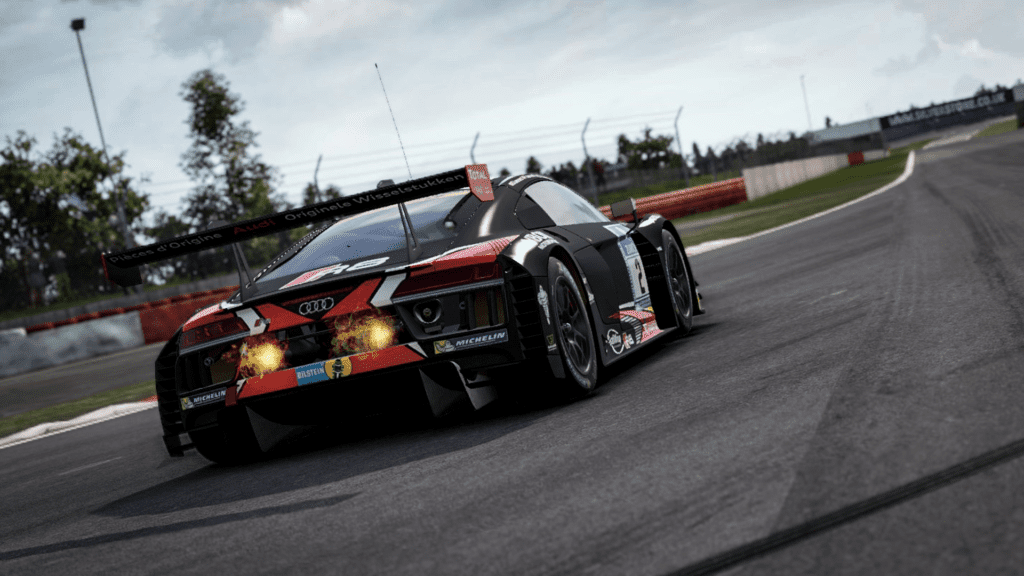
Released in 2017, Project CARS 2 (PCARS 2) garnered favourable reviews from fans and critics alike, as it crammed a whole bunch of racing content into one PC and console – from IndyCars to Rallycross. Not only that, but it has some of the best changeable weather effects in any game, and it still looks great four years after release.
Whether its vehicle handling matches its graphical prowess is arguable, but after spending some time with PCARS 2 in VR I can categorically say it works tremendously well.
I could write a whole article about the things I don’t like about this game; a lot of the cars handle very strangely and some of the engine sounds are unconvincing or just plain wrong (looking at you, Ford GT with four cylinders).
However, when you find the right car and track combination – plus pick the right weather and time of day – PCARS 2 is an absolute delight and a definite must-try for any racing fans with a VR headset. The action speeds along fluidly, and even with 20+ AI opponents on the grid it maintains impressive graphical fidelity.
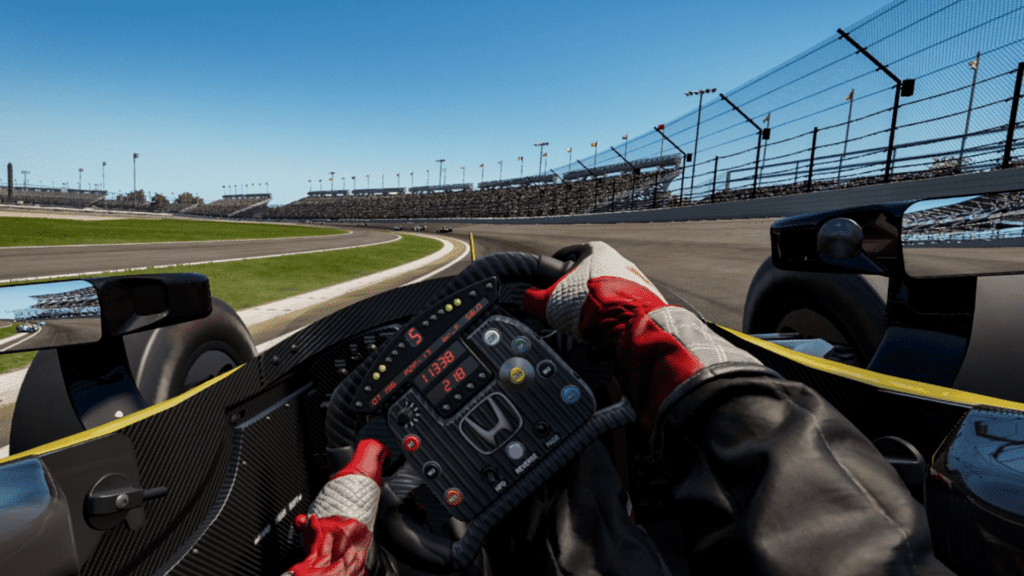
PCARS 2 uses Slightly Mad Studios’ proprietary MADNESS physics engine, with one of its key features being the sort of dynamic weather never seen before in a racing game. Puddles form organically, snow flutters onto your windscreen and the sunset over the Ferris wheel at Le Mans is truly a sight to behold, doubly so in VR.
Best of all though, it has licenses to use the IndyCar Series and the Indianapolis Motor Speedway oval, so you can feel like you’re actually in the Indy 500.
Automobilista 2
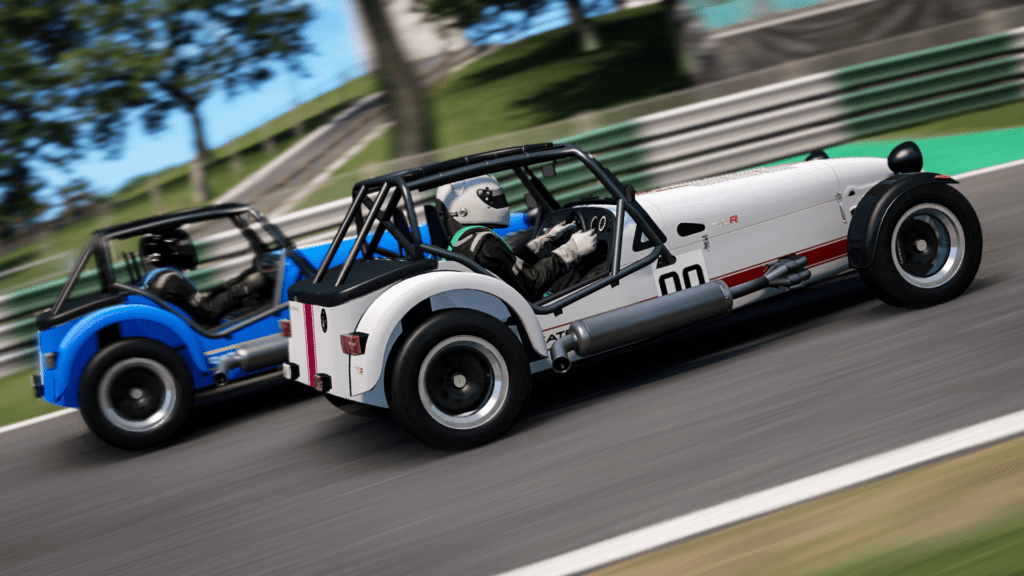
Automobilista 2 (AMS2) uses the same MADNESS physics engine as Project CARS 2, so in a lot of ways, the two games are very similar in how they handle and look.
However, AMS2 arguably has the upper hand in terms of physics, having been refined by crack Brazilian developers Reiza over the past 18 months. They’ve maintained the same jaw-dropping visuals and dynamic weather used by Slightly Mad Studios in their title. AMS2 has less content overall, but it feels like there’s been a little more attention to detail in what’s there.
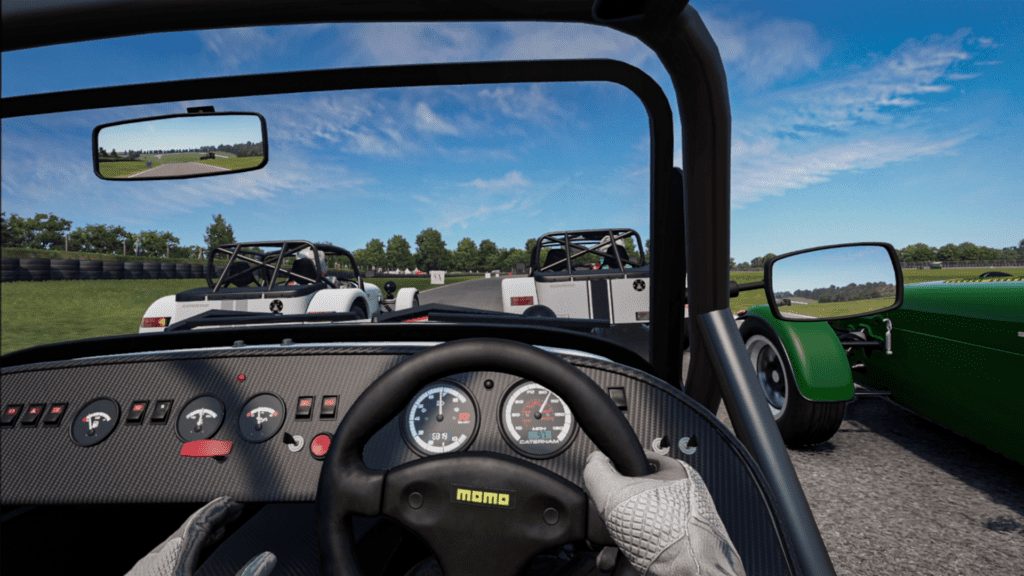
In terms of VR performance, it matches PCARS 2 in the immersion stakes; it looks pretty, has some excellent sounds and runs smoothly even with multiple cars on track. Arguably the handling physics are an improvement on PCARS 2, but there still exists a perceptible MADNESS engine whiff about how the cars behave, and for me, that’s not wholly positive.
As an early-backer of AMS2, I paid $99.99/£75 to receive the game plus all future DLC, so I’m invested in this being a great game, but at the moment I can only recommend it as a fun VR title.
DiRT Rally 2.0
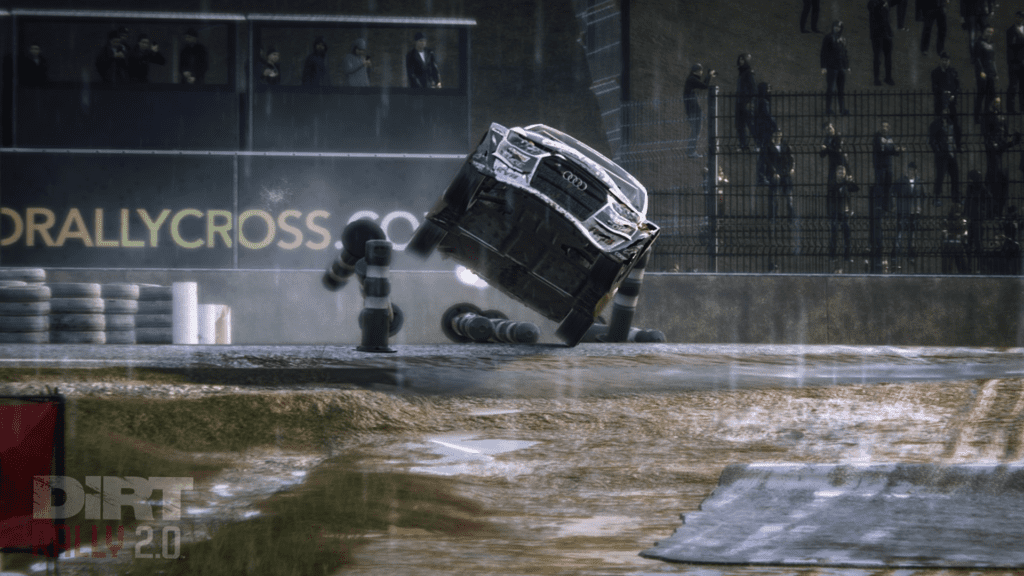
A hugely popular rally title, at the moment DiRT Rally 2.0 (DR 2.0) is the only focused rally title designed with VR compatibility in mind. With its genre-leading engine notes and impressive weather effects, DR 2.0 sets the benchmark for immersion in rally sims, and arguably, in the racing genre as a whole.
Firing through a dark and rainy Welsh forest in the middle of the night, aiming your Group B Metro 6R4 at the next muddy apex, exhaust note ricocheting off the claustrophobia-inducing trees as you inevitably spin on a twig and beach yourself in a ditch.
This is rallying, and in VR you really do experience all the visceral thrills. The only thing that could possibly make the experience more authentic is if Phil Mills were sitting next to you… but it would be a little awkward afterwards when you immediately fire up your Dunfermline Athletic Football Manager save. He’s probably got other places to be after all.
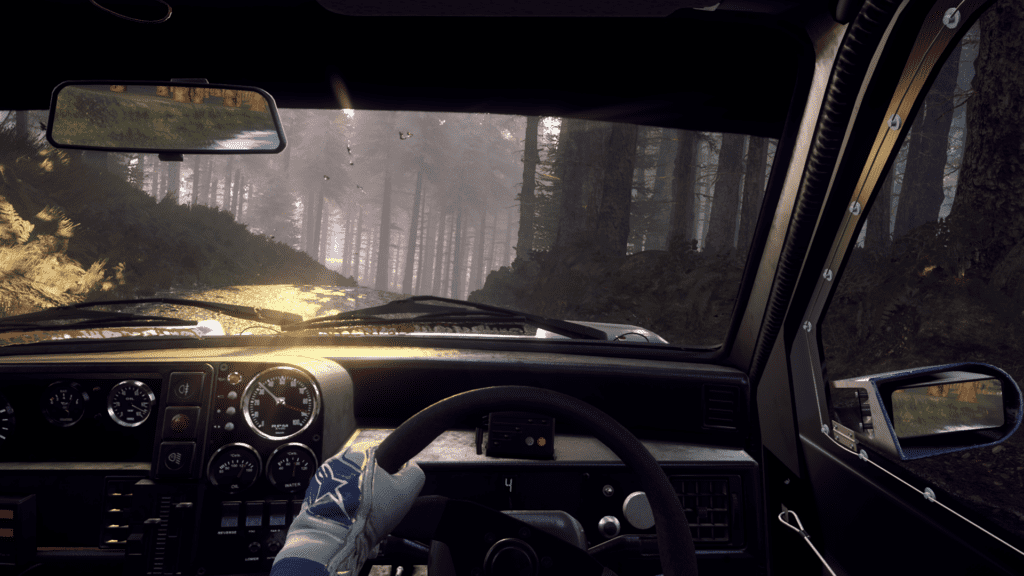
With chief rally sim rival WRC 10 currently without VR compatibility, DiRT Rally 2.0 pretty much has the VR rally market to itself just now, but you won’t be disappointed by the end results, especially as it has the FIA World Rallycross Championship license, meaning you can unleash your inner Johan Kristofferson in mixed-surface races as well as rallying against the clock.
iRacing
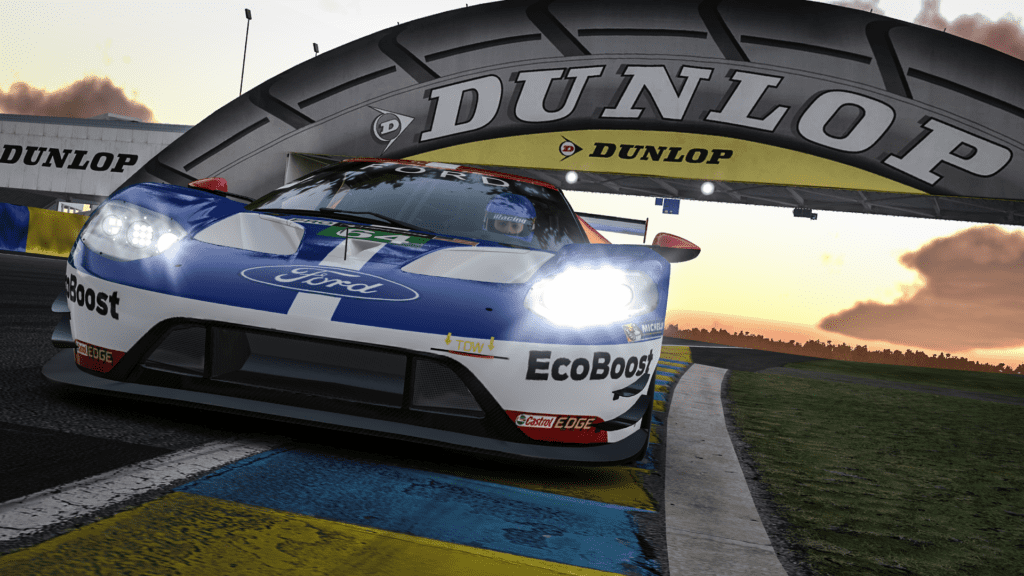
I’m not going to lie; I’ve never been a huge fan of iRacing. The cost is a little steep, but for me, the cars always feel like they’re on the verge of losing grip at any moment, even more so when I used Logitech gear-driven wheels.
I still enjoy dabbling now and again, but as a driving experience, iRacing leaves me feeling a little cold. However, when I fired it up in VR it suddenly made sense. I no longer had claustrophobia stuck inside that fixed cockpit camera position and felt like I could really lean into the corners and nail the apices.
iRacing also seems to be well set up for VR – it recognises your headset before booting up a session and prompts you on whether you want to use it or not, allowing you to scroll the UI as you normally would, then strap on the headset when the racing starts.
The great thing about iRacing now is that you can race against AI cars, and this is doubly important for VR users that want to get the hang of using their headset before racing against other people online. In fact, for some great advice on which cars have AI racing implemented, check out our handy guide.

The best thing about iRacing in VR though is that it performs so well. I did a back-to-back test of it with Assetto Corsa Competizione (ACC), and the differences were stark.
ACC looked blocky, low-res and suffered from slowdown, while iRacing was silky-smooth and retained almost as much detail as it had on a monitor. The consistent framerate really keeps the action flowing, and during my test at Brands Hatch Grand Prix Circuit in the Dallara F3, I even experienced that same queasy feeling at Paddock Hill Bend you get when you hit a real-life compression.
And, of course, it’s pretty cool to see iRacing’s excellent new damage model up close…
Assetto Corsa
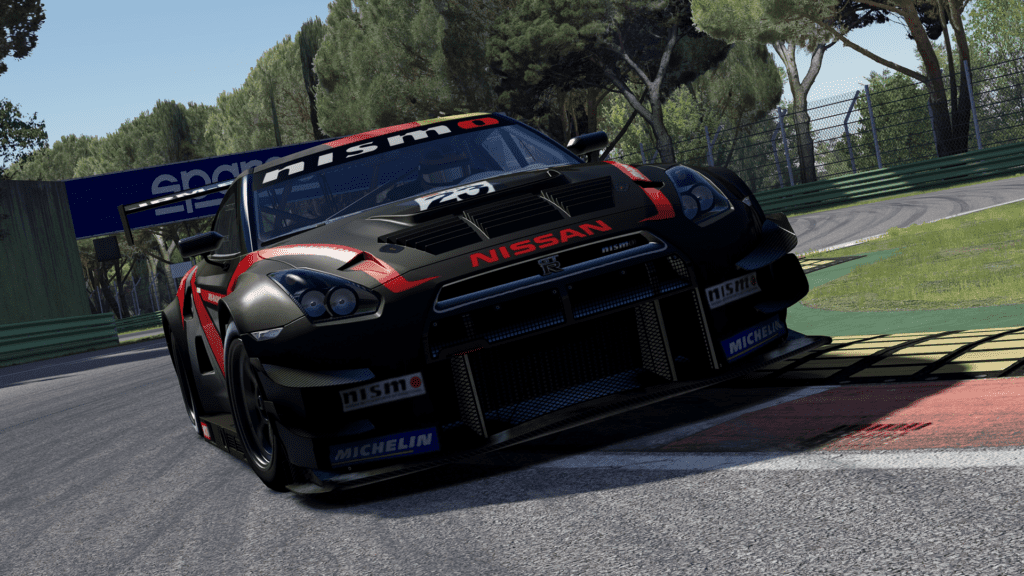
Released all the way back in 2014, Assetto Corsa (AC) was never designed with VR compatibility in mind. However, with the help of Steam VR, it’s possible to play the stacks of content Kunos has crammed into AC with maximum immersion. For those unfamiliar with AC – there’s bound to be one or two of you left – here’s why we like it a lot.
In terms of performance, AC runs very smoothly in VR. Naturally, the image quality takes a bit of a hit on the Quest 2 – it’s not a top of the range VR headset after all – but everything looks tidy and retains a high level of immersion.
Regularly discounted, AC is definitely worth picking up in a sale, along with its vast range of DLC, including masses of officially-licensed Ferrari and Porsche racing cars.
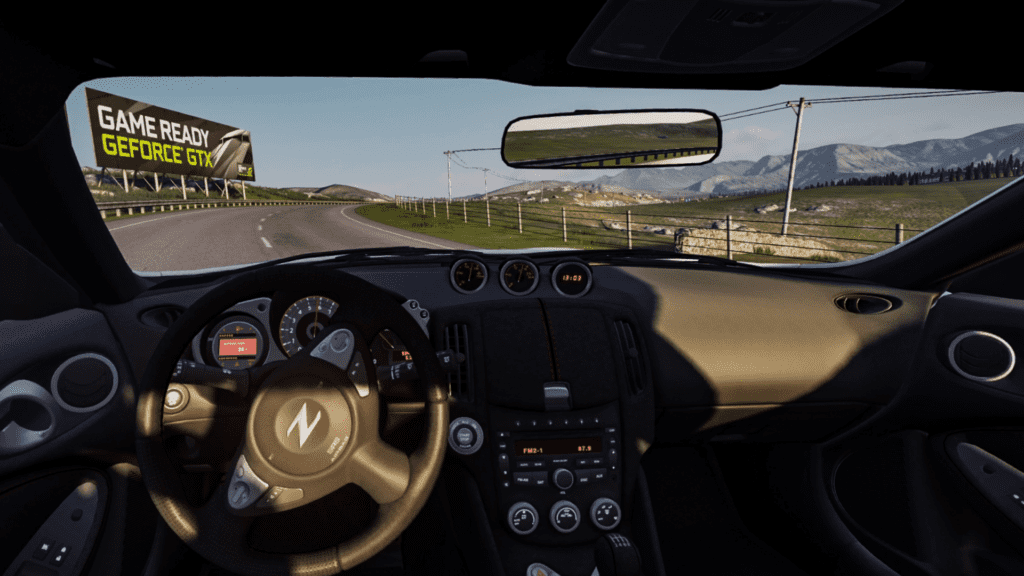
Much like PCARS 2, iRacing and AMS2, AC has modern GT3 racers, supercars, sports cars and Le Mans Prototypes, plus historic vehicles, but doesn’t have rallycross or oval racing content. Thankfully, the feel of the cars already present in-game makes up for the relative lack of racing diversity, although it’s become a huge hit among the drifting community, coming with several pieces of drift vehicle and track content.
Live for Speed
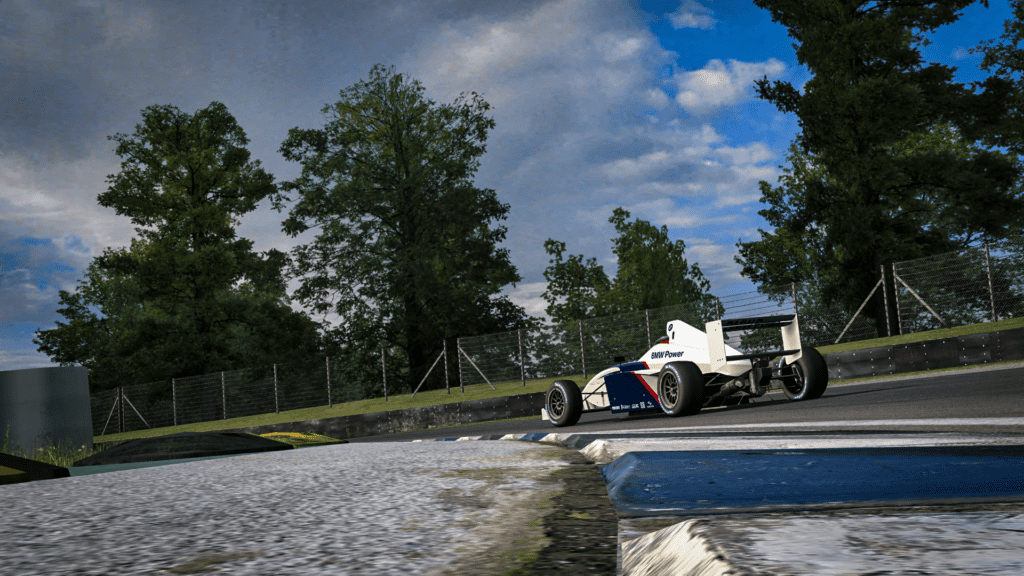
What’s Live for Speed (LFS) I hear you ask? Well, it’s the racing sim old people like me used to play (admittedly not very much, as when I started properly getting into sims around 2010 it was getting a little long in the tooth…)
Amazingly, it’s still in development today and recently gained VR functionality. What is it like to play? Well, the physics have always been excellent, but the sim is let down by a lack of content. Well, it was, until the S3 update dropped, adding mods to the fray.
As a VR experience, you can turn all the graphics settings up to 11 and still get a smooth experience on a mid-range gaming PC, but for a game that began life in 2002, that’s hardly a surprise.
LFS is a pleasantly immersive driving simulator overall, however, but difficult to justify when you could buy the entire top five on this list for less than it costs to unlock all of LFS’s content. Ouch. It does have stereoscopic mirrors though, which are supremely cool in VR.
LFS gets bonus marks for its ease-of-use in VR mode too. It’s well worth checking out its free demo.
Honourable mentions
F1 22
EA SPORTS’ first foray into the world of F1 videogames (after it purchased Codemasters) saw a much-hyped VR mode added to F1 22. And it works… Only for PC users, mind.
However, using an Oculus Quest 2 (which a fair proportion of PC sim racers will also be using), the graphics and performance aren’t particularly special, with jerky movements proving to be immersion-breaking – even with the graphics turned down on my mid-range gaming PC.
It’s disappointing, however, F1 22 is the only the way to drive officially licensed 2022 Formula 1 cars in a sim right now. And, as our very own John Munro found out earlier this year, if you have a beefy enough PC and VR headset, it can provide an entreatingly exciting experience.
Richard Burns Rally
It’s an ancient rally sim that requires a bit of leg work to get working in VR, but boy, does it deliver! I’m not going to wax lyrical about how much I love this sim – I’ve already done that – but the only reason this doesn’t feature in my top five is because of the extra effort required to get it working. Well worth It though!
RaceRoom Racing Experience
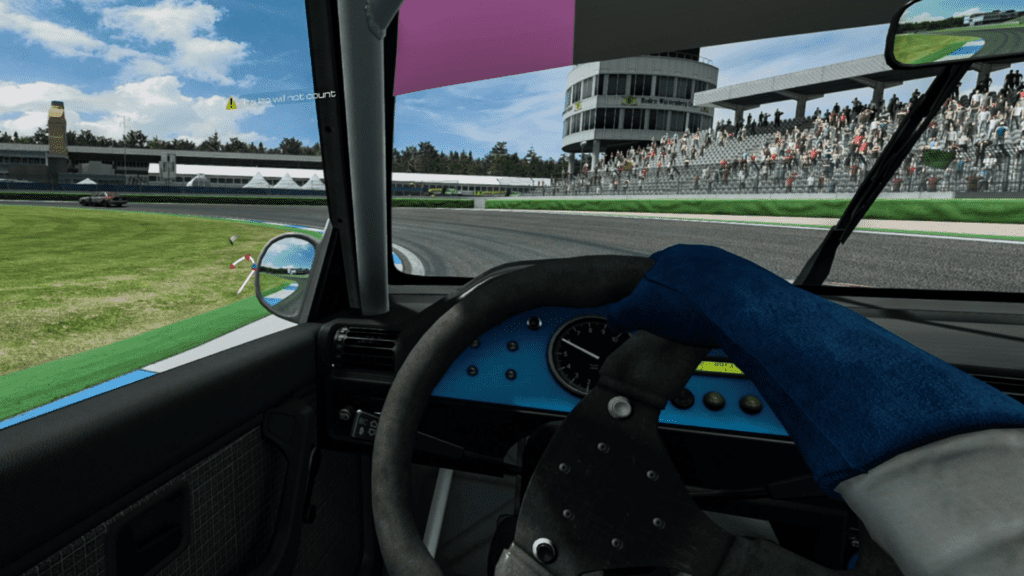
RaceRoom is a free to play title from the makers of classic sims GTR2 and GT Legends – SimBin. Although the feel of the cars can be divisive, different people prefer different things after all, the main plus point of RaceRoom is that it can be sampled in VR for free.
So, if you don’t like it, you’re under no obligation to buy any more content. In terms of immersion, the big thing RaceRoom has over its competition is the car sounds – they’re fantastic!
I enjoyed trying it out, but I feel like there are much cheaper and satisfying ways to go about VR virtual racing.
Assetto Corsa Competizione
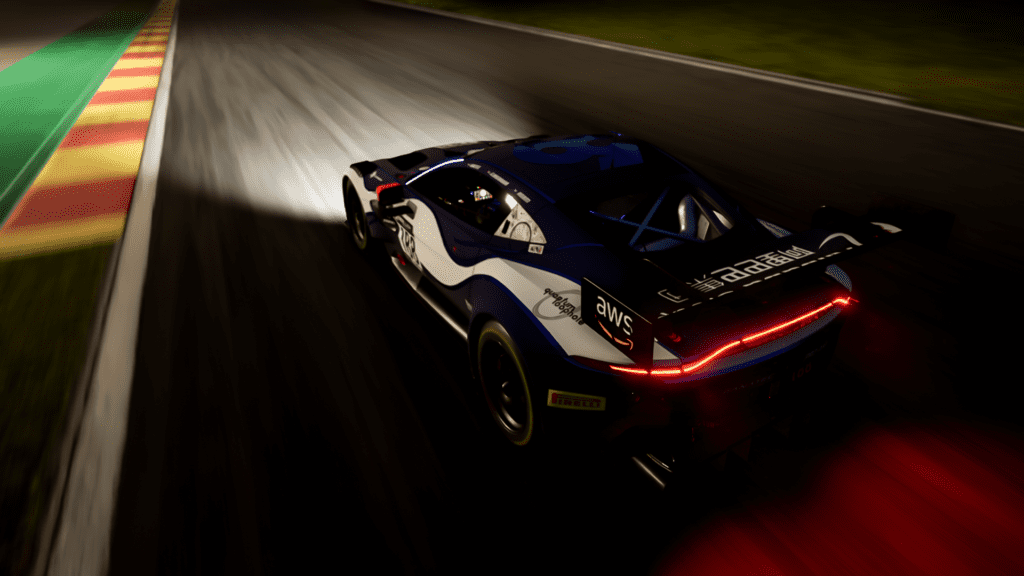
Assetto Corsa Competizione (ACC) is my favourite sim right now. It pains me to say this, but the VR implementation just isn’t where it needs to be.
My guess as to why is down to how resource-intensive ACC is. Because of this, I was forced to buy a new motherboard and CPU as I had a spate of game crashes caused by a processor bottleneck. As a result, the graphics in VR aren’t as pretty as they are on a monitor.
In fact, I let my non-sim racer friend Gordon give it a go and he remarked “it looks a bit jaggy,” and he was right, it is a bit jaggy. It’s a big bit jaggy in fact.
Not only that, but in certain light conditions – dusk and dawn mainly – you get a bit of FPS slowdown, which really ruins the immersion. It’s a shame because ACC has the potential to look incredible in VR.
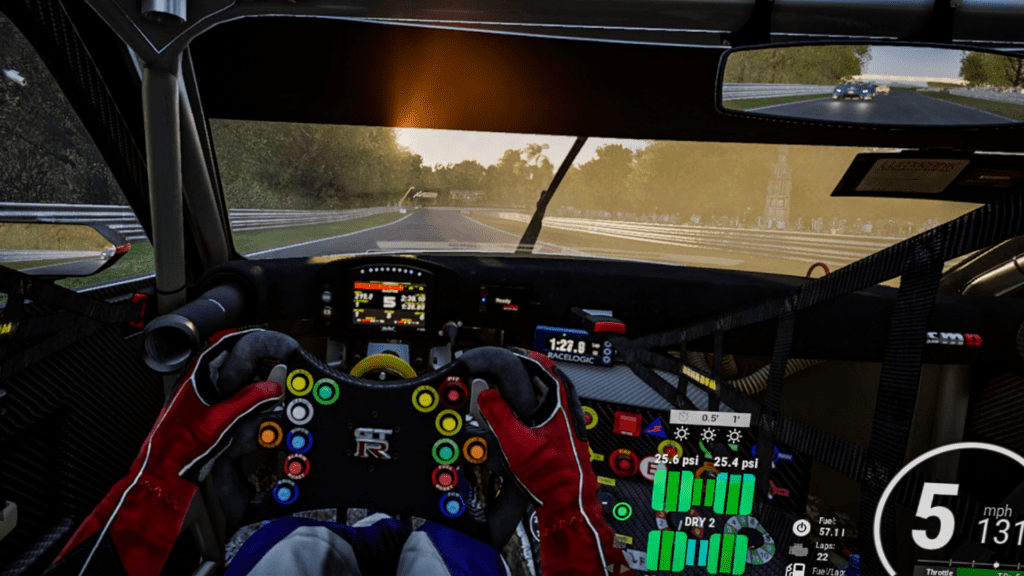
What we would like to see
Wreckfest and BeamNG.drive
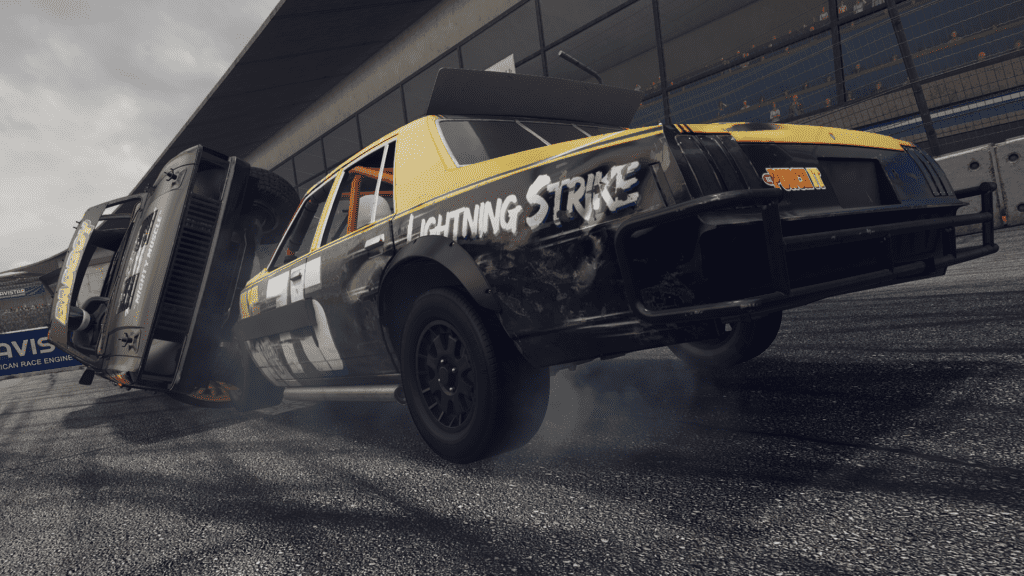
How awesome would these be in VR?! Seriously, imagine being in a five-car pile-up; your car rolling over and over and over and up and down and side to side and up and down and over and over…
…ehhh, on second thoughts I’ll stick to using a monitor – I love a cinematic car crash, but really don’t want to star in my own version of Mad Max 2: Welcome to Chunderdome.
The pick of the bunch
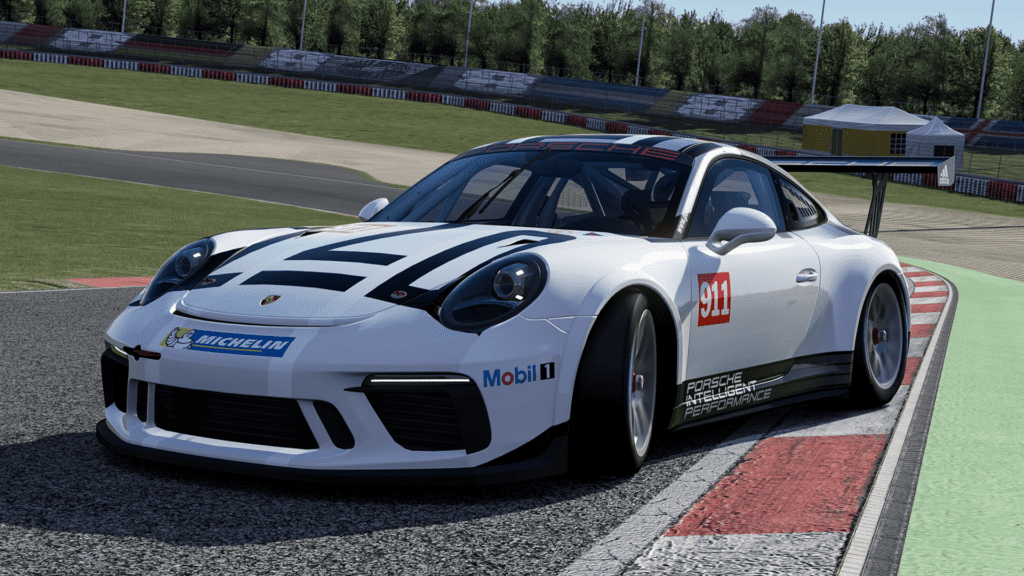
VR fits very nicely into the racing game genre, and can actually make you a quicker and more consistent driver in some cases. But for most sim racers, VR is an amazing way to create a whole new level of immersion in our niche hobby.
For me, VR gives titles such as Project CARS 2 and Automobilista 2 added value as a gaming experience, even though I’m not a huge fan of either in terms of physics. They are at least excellently-optimised for VR.
If I had to pick between PCARS 2 and AMS 2 as VR titles, I’d go for PCARS 2 – purely because as it has a bigger variety of tracks and cars to create convincing VR experiences with. However, AMS2 – especially since its v1.41 update – is arguably the more satisfying to play right now, and new content seems to arrive with every update. One to keep an eye on, then.
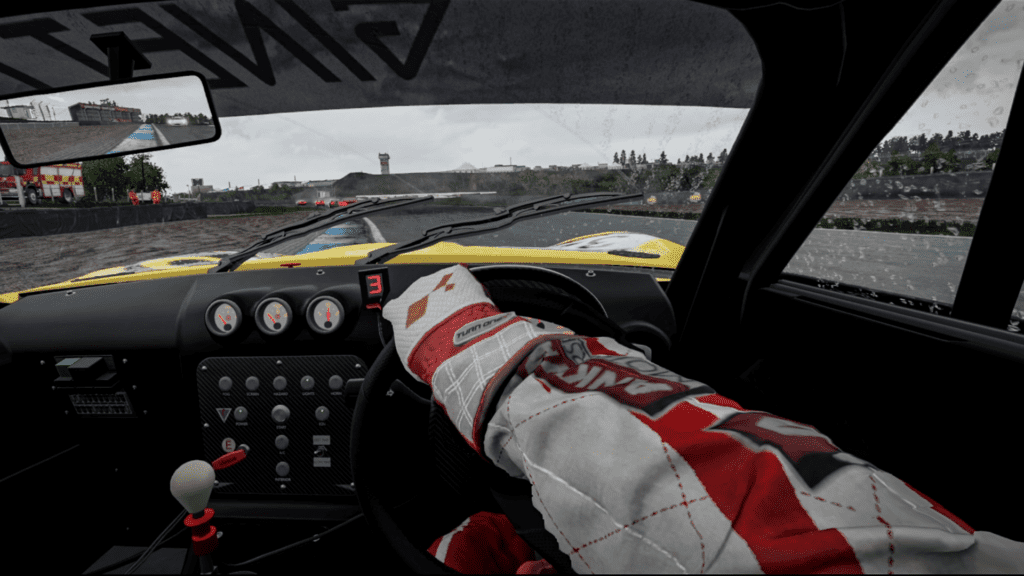
DiRT Rally 2.0 is far and away the most complete VR experience for rally fans, so comes top of its own category. For the most complete sim racing VR experience overall – one that combines driving feel, visuals, sounds and content – I’d pick iRacing or Assetto Corsa. If cost is a factor, then I’d choose Assetto Corsa.
Check out some of my sim racing VR experiences!
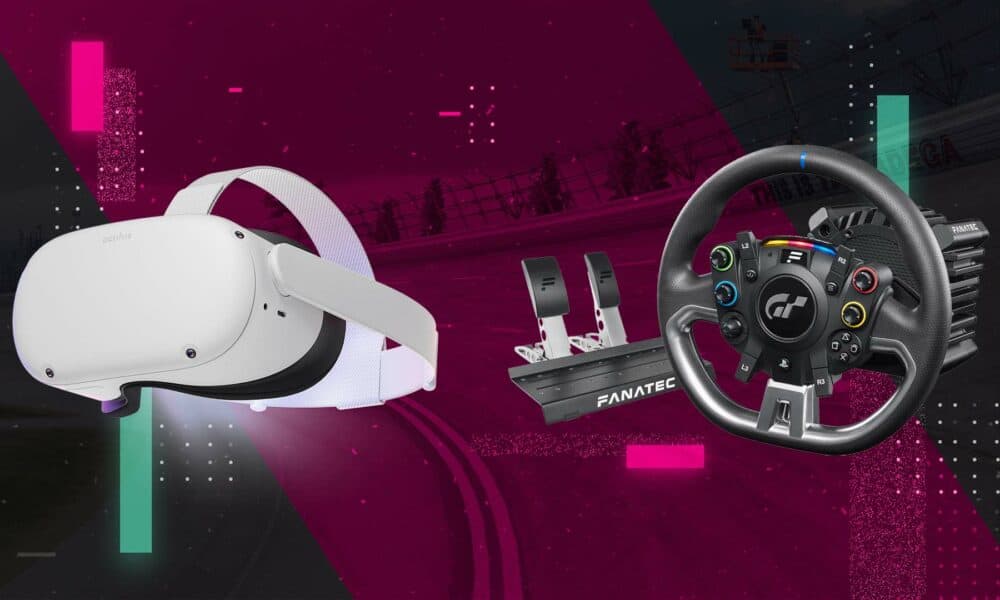
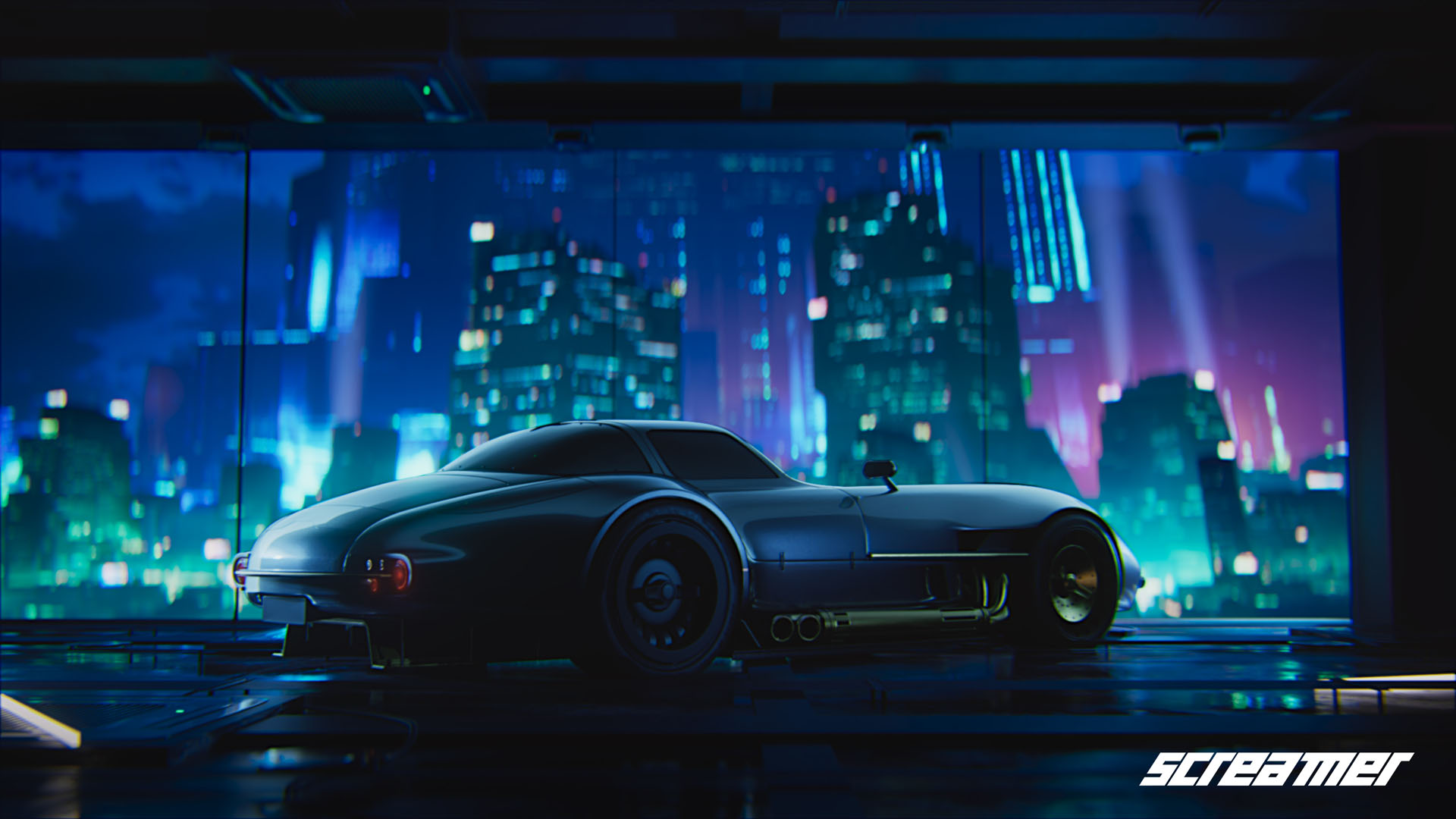
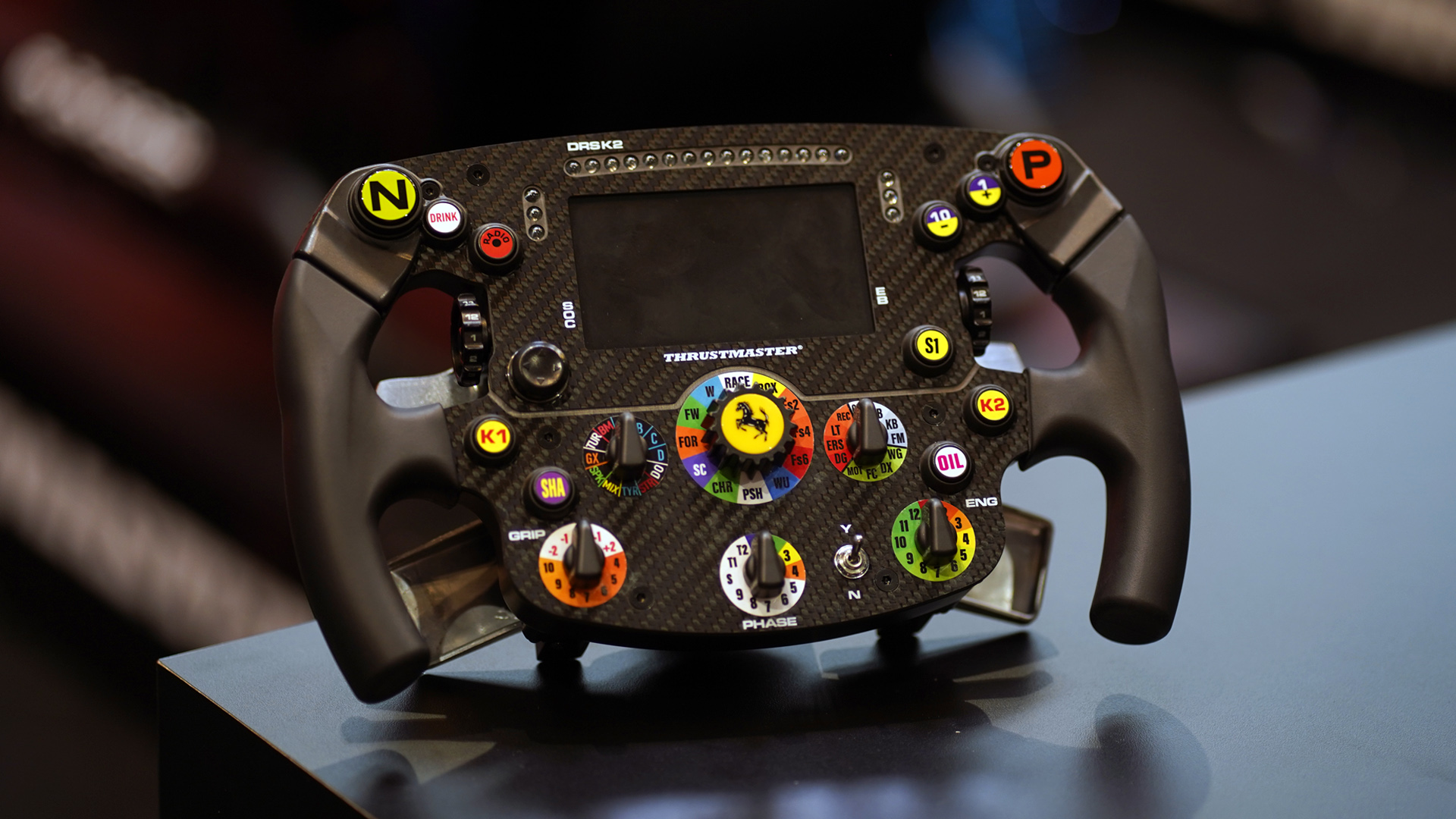
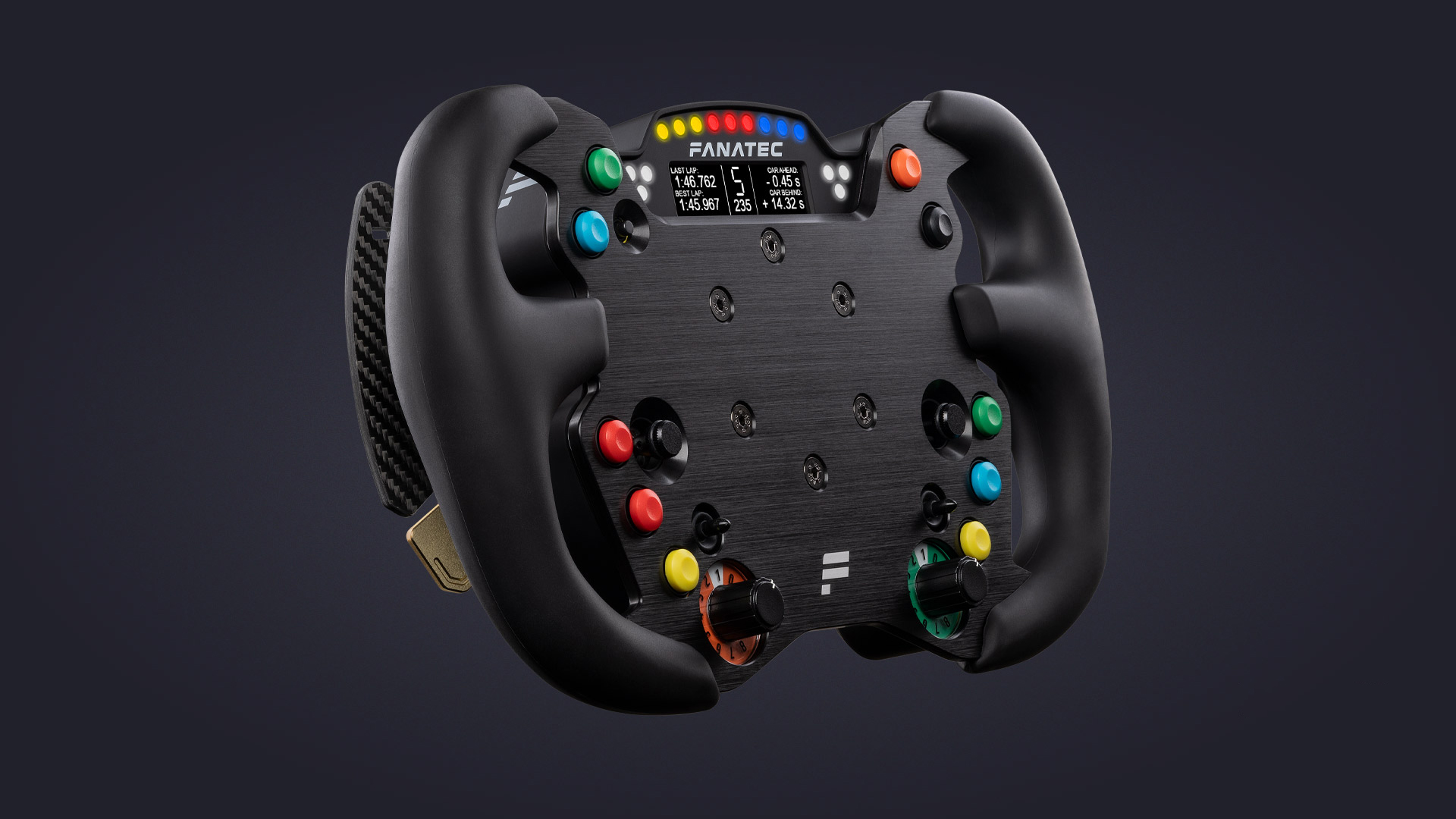
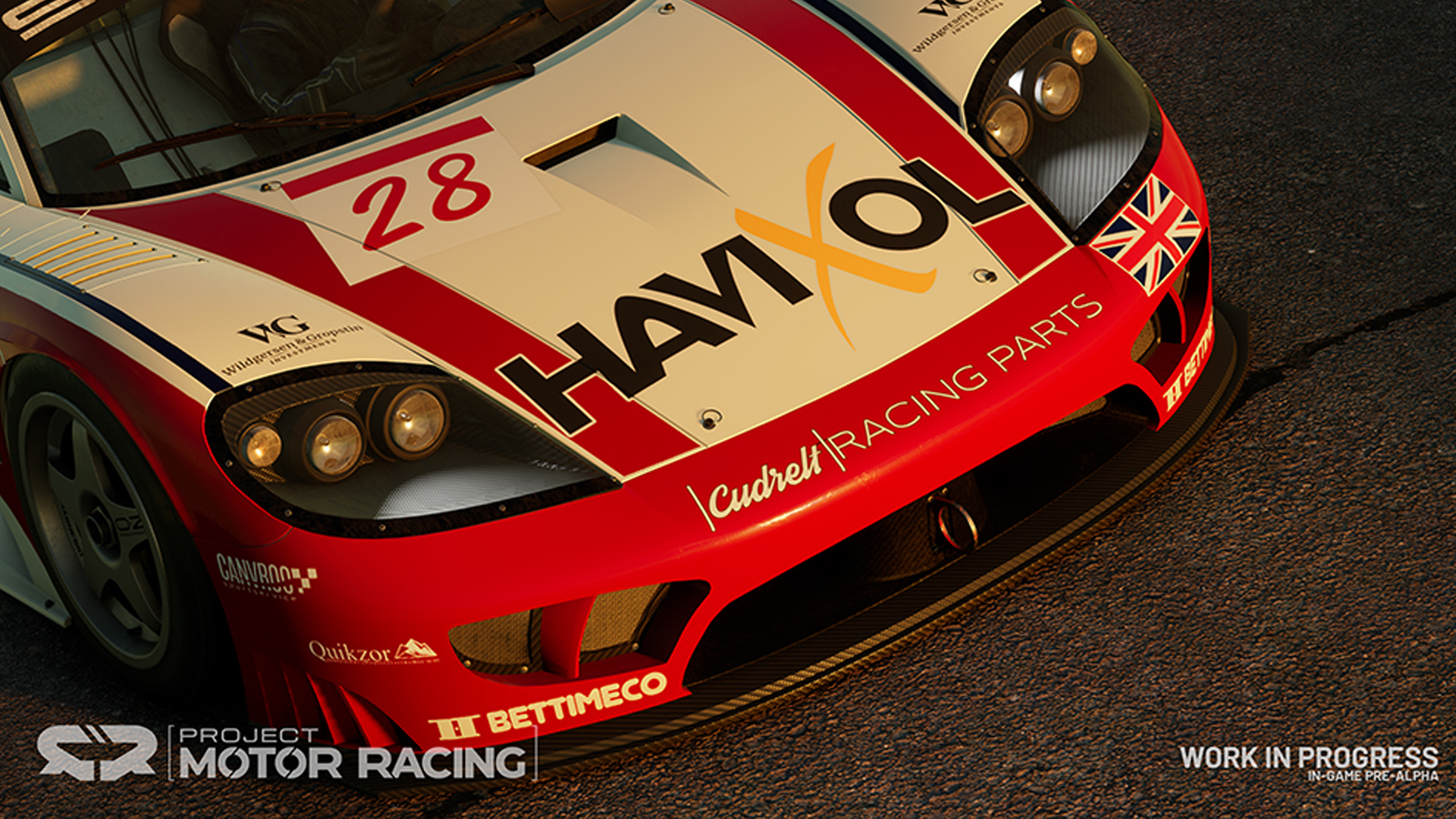
Chat with the Community
Sign Up To CommentIt's completely Free